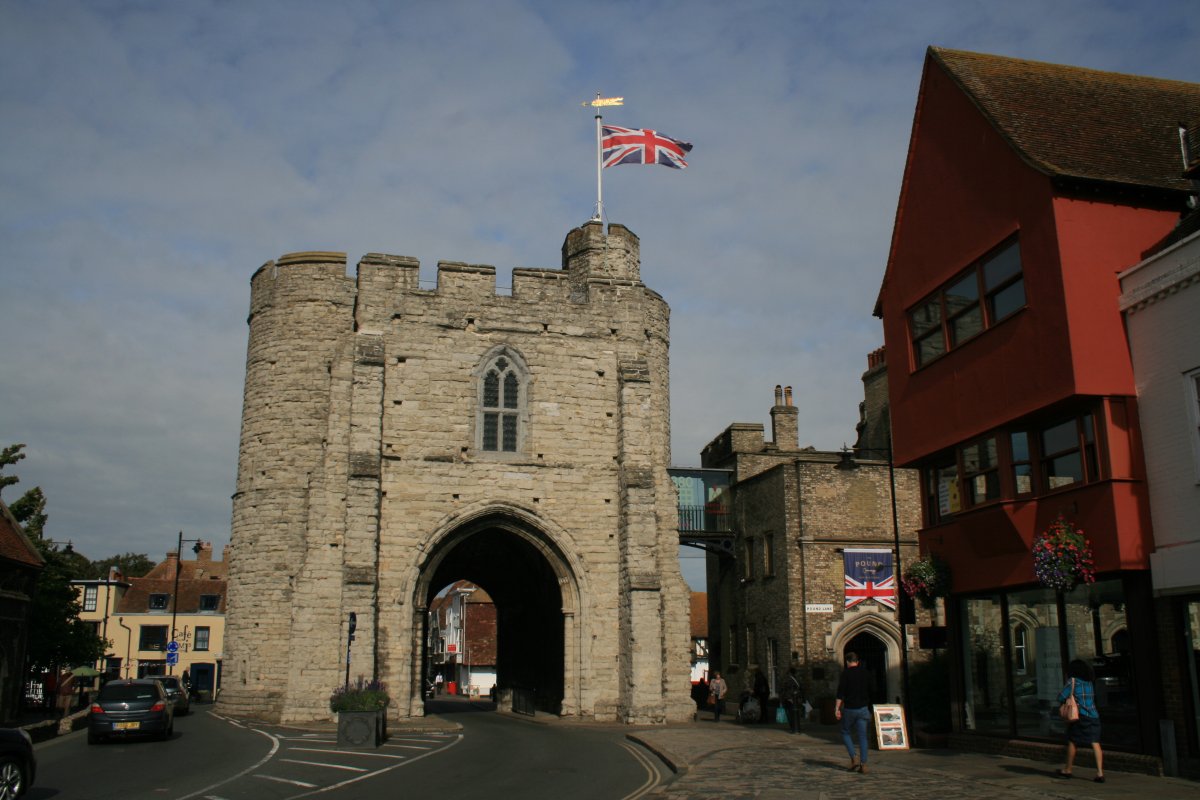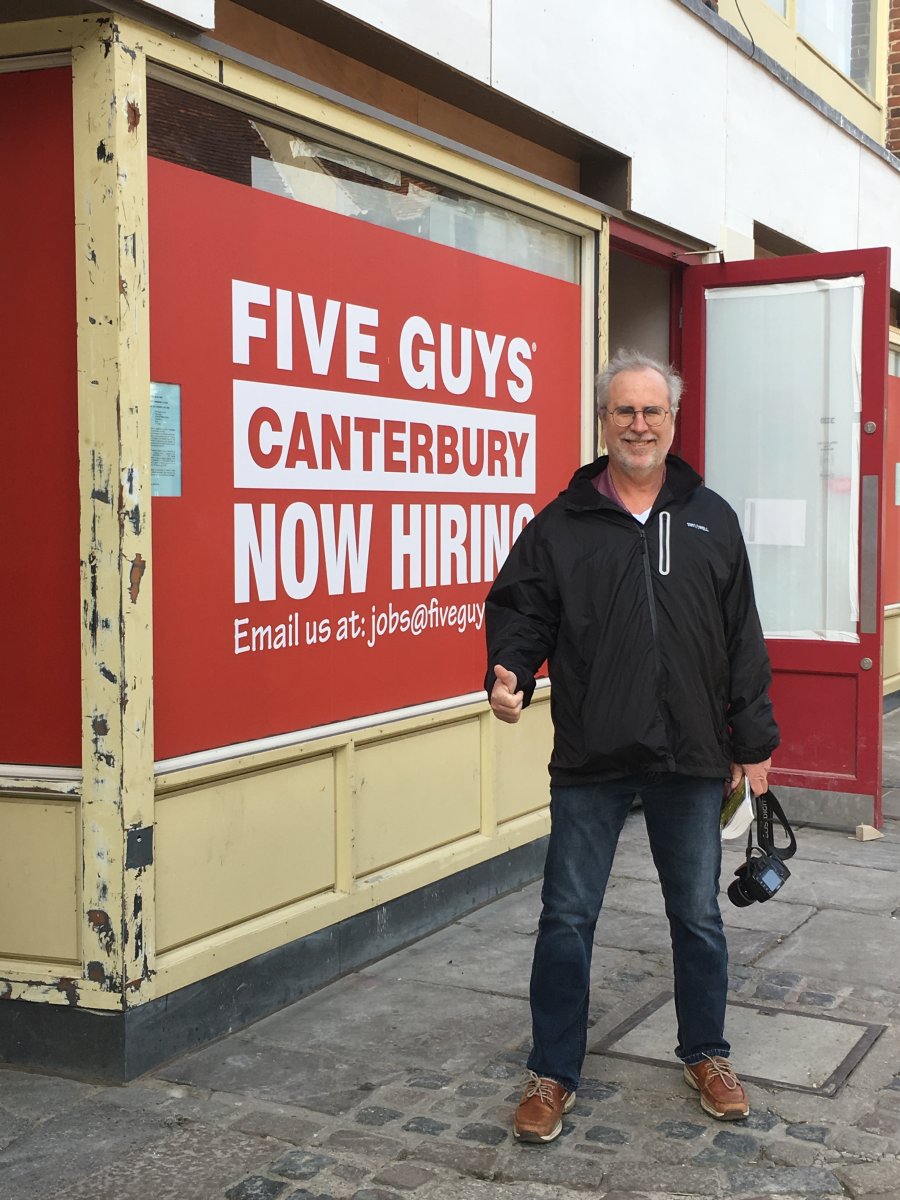England - Sep18 - Canterbury
|
| We arrived in Canterbury too late to see anything so we went right to our B&B, pictured here. Canterbury is a walled city and the B&B is just inside the wall on the south side. It's a short walk to the city center. |
| |
 |
|
| An old castle Keep was literally across the street from the B&B. In northern France two years ago we spent half a day driving out to see one of these! |
| |
 |
|
| Another look at the Keep from the side. |
| |
 |
|
| And a photo of the Keep that was on the wall inside the B&B. |
| |
 |
|
| The next morning we walked into the town of Canterbury. |
| |
 |
|
|
What's this? The famous Canterbury Cathdral is all covered in scaffolding. Oh well.
|
| |
 |
|
| The ornate side entrance. |
| |
 |
|
|
That's a lot of scaffolding.
|
| |
 |
|
| The inner courtyard surrounded by the Cloisters which were a group of buildings devoted to monastic life. |
| |
 |
|
| The Cloisters surrounded the courtyard. |
| |
 |
|
| |
| |
 |
|
|
I guess you can't be afraid of heights to work on the renovation.
|
| |
 |
|
|
This is what the Cathedral looked like back in 1890.
|
| |
 |
|
| Thankfully, the cathedral did not receive serious damage during either World War. |
| |
 |
|
From Wikipedia: Canterbury Cathedral is one of the oldest and most famous Christian structures in England. It forms part of a World Heritage Site. It is the cathedral of the Archbishop of Canterbury, currently Justin Welby, leader of the Church of England and symbolic leader of the worldwide Anglican Communion. Its formal title is the Cathedral and Metropolitical Church of Christ at Canterbury.
|
| |
 |
|
|
Founded in 597, the cathedral was completely rebuilt between 1070 and 1077. The east end was greatly enlarged at the beginning of the 12th century, and largely rebuilt in the Gothic style following a fire in 1174, with significant eastward extensions to accommodate the flow of pilgrims visiting the shrine of Thomas Becket, the archbishop who was murdered in the cathedral in 1170. The Norman nave and transepts survived until the late 14th century, when they were demolished to make way for the present structures.
|
| |
 |
|
| The fan vaulting of the crossing. |
| |
 |
|
|
This is where Thomas Beckett, ArchBishop of Canterbury, was killed by the King's men in 1170. The king had frequent conflicts with the strong-willed Becket and is said to have exclaimed in frustration, "Will no one rid me of this turbulent priest?" Four knights took it literally and murdered Becket in his own cathedral. It was a turning point in western civilization. From "The Pillars of the Earth" by Ken Follett: The death of Thomas Becket had shown that, in a conflict between the Church and the Crown, the monarch could always prevail by the use of brute force. But the cult of Saint Thomas proved that such a victory would always be a hollow one. The power of a king was not absolute, after all: it could be restrained by the will of the people.
|
| |
 |
|
|
|
| |
 |
|
| |
| |
 |
|
| Leaving the Cathedral, we strolled down the Main Street of Canterbury. |
| |
 |
|
| The Union Jack waves proudly over the wall's ramparts. |
| |
 |
|
|
Canterbury had a neat, medieval main street.
|
| |
 |
|
| Our first dinner in England was at this little Italian restaurant: excellent! |
| |
 |
|
|
A Five Guys in Canterbury? Say it isn't so!
|
| |
 |
|
| |
| |
|
|
|
|
|
|























